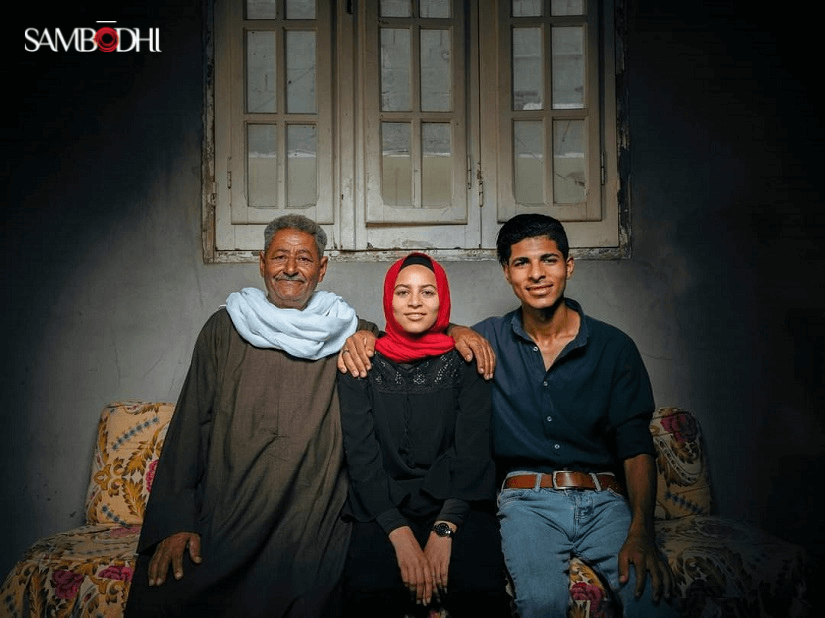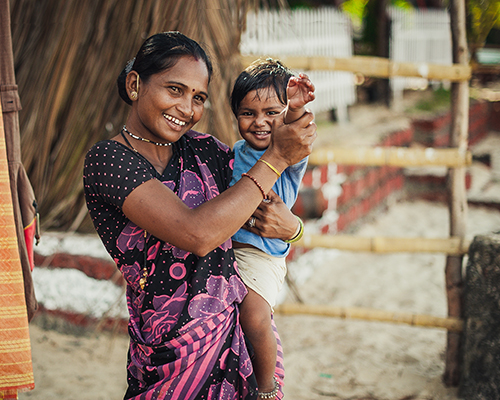Rite of Passage: Can Male Allyship Help End FGM?

In Baringo County of Kenya lives a boy called Rutto Kamama Kolem. He grew up believing that Female Genital Mutilation was a sign of goodness in a woman, making her eligible to become a wife. Literacy levels were staggering at 82% for his constituency, and child marriage was the norm.
Living within such an echo chamber prevented him from ever knowing just how inhumane FGM was as a cultural practice. But that was until his internalized ideas were countered by the Nitasimama Impara program by UNICEF, working to develop values of gender equality by educating everyone on the ill effects of gender-based violent practices such as FGM.
He says, “I was able to understand the pain and challenges my own blood sister had to deal with as an FGM survivor. This pains me because due to my lack of knowledge, I could not protect her and her dream of having a good healthy and educated family.”
FGM is thought to have affected 200 million girls and women still alive today. The alarming news is that 68 million more girls will be forced to undergo FGM by 2030 if we don’t step up our efforts to put a stop to this practice.
In the age of modernization, innovation, and progression, the world regresses with practices such as FGM that restrict women’s bodily autonomy. Equality becomes a pipedream when statistics reveal the price girls must pay for being born a female.
But before we delve deeper, let’s understand how the United Nations Populations Fund (UNFPA) defines FGM.
What is Female Genital Mutilation (FGM)?
FGM is the partial or total removal of external female genitalia for cultural or other non-medical reasons. It is a severe form of gender-based violence that endangers the lives of millions of girls and women because of complications caused by this practice.


Other than such drastic physical consequences of FGM, the larger cultural repercussions it brings to communities make it all the more serious.
According to current estimates by WHO, UNICEF, UNFPA, World Bank, and UNPD, most countries with a high incidence of FGM also have high maternal mortality rates.
Such a heinous practice induces psychological effects such as anxiety and depression. The stress of the procedure may trigger behavioral disturbances in children. It not only causes a loss of trust and confidence in caregivers, but if promoted as part of the tradition, which happens to be the case almost always, women develop beliefs about the importance of FGM, thereby inflicting it on their future generations.
If FGM is such an ancient practice, why is it so prevalent today?
Archaic practices continue to be perpetuated in the name of traditions and tend to take on new forms as time passes. FGM is no different. Until recently, FGM was seen as a treatment for perceived ailments such as hysteria, epilepsy, mental disorders, masturbation, nymphomania, and melancholia. Earlier, it used to be carried out by the elderly in the community, but in some cases, emerging trends have begun medicalizing FGM.
Statistics reveal that around one in four women and girls who have undergone FGM were subjected to the practice by healthcare providers.
Some argue that tradition is carried out safely when a medical professional executes FGM. However, that’s not true. That’s because it still involves removing and damaging healthy, normal tissue, thereby interfering with the natural functions of girls’ bodies.
When the practice is medicalized, its legitimacy is strengthened, which inflates the social expectancy that FGM will and should continue.
What is the world doing about eliminating FGM from society?
Efforts by UNFPA and UNICEF to eliminate FGM began with the Joint Program on the Elimination of Female Genital Mutilation: Accelerating Change in 2008. In 2021, the program reached Phase III, having made significant leaps in eliminating FGM, listed here in this report.
The idea is to empower women and girls to claim their right to bodily autonomy, transforming gender norms and power relations to end FGM once and for all. There is evidence that when girls and women are empowered to make decisions about their bodies, it positively impacts other areas of their lives, such as their engagement in politics, society, and the economy.
Most countries involved in the program have passed laws banning FGM, but there exist gaps in legislation because of low levels of education, poverty, and weak healthcare.
Eliminating FGM was de-prioritized in the emergency response to the pandemic, which shows that it still doesn’t have the attention it requires.
So, how do we prioritize eliminating FGM?
Empowerment shouldn’t be a burden to those who suffer due to its lack. If the responsibility to uplift themselves lies solely on minorities, we trap ourselves in endless cycles of transforming oppression. Meanwhile, the privileged continue to profit from others’ sufferings.
Empowerment, therefore, becomes a shared responsibility.
Men can be the most potent allies for women in their struggle against practices such as FMG. They can help women achieve equality by encouraging all genders to participate as agents of change and act against negative stereotypes and behaviors.
Following a similar trajectory, this year’s theme for the International Day of Zero Tolerance for FGM is #MenEndFGM.
Accordingly, UNICEF calls for mobilizing partnerships with men and boys to end FGM and promote positive social and gender norms. In this decade of action, only eight years remain to eliminate this harmful practice, and this year, the focus is on using the allyship that men and boys can provide on the matter.
How can men help eliminate FGM?
Evidence suggests that boys and men are upending power structures in their families and communities by encouraging women and girls to act as change agents and promoting discourse between those with different opinions concerning FGM. These encouraging trends are the outcome of advocacy and programming initiatives that assist men and boys in realizing their privilege and power to advance the interests of women and girls while also eradicating toxic masculinities.
In the last five years, around 3000 networks for men and boys have advocated ending FGM.

Can such measures really help end this practice?
The answer is yes.
Over the years of work that UNICEF has put in place to eliminate FGM, stories like Kolem’s have emerged, showing just how much impact male allies can bring in solving this problem.
After he was made aware of just how heinous FGM is as a cultural practice, Kolem developed an action plan to reach out to his community through public forums to sensitize them on FGM and child marriage. His efforts led him to engage 500 girls in schools, 100 young mothers at a community level, and over 1000 young men through community tournaments!
He says, “I fully understand my role as a gender equality champion and agent of change in transforming these negative social norms. I now appreciate that to end these retrogressive practices, I must be involved as a young man in protecting women and girls in my community.”
References:
https://www.unfpa.org/resources/female-genital-mutilation-fgm-frequently-asked-questions#whatisfgm
https://www.unfpa.org/sites/default/files/pub-pdf/FGM-AR2021.pdf
https://www.un.org/en/observances/female-genital-mutilation-day
Aishwarya Bhatia, Sambodhi

